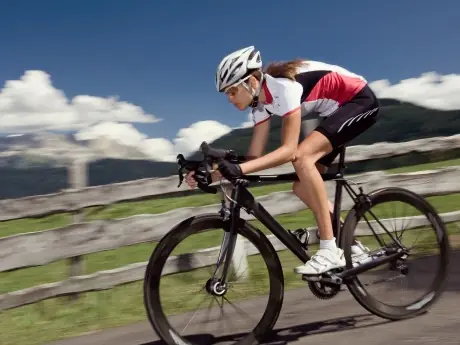
When asked how to improve as a cyclist, Eddy Merckx famously replied, "Ride more!"
If you want to improve as a cyclist, your number one resolution should be to exercise consistently. If you want to live a long and healthy life, your No. 1 resolution should be to exercise consistently. If you want to reduce stress and get more enjoyment out of life, your No. 1 resolution should be to exercise consistently.
Over Thanksgiving I had brunch with the friend who got me started riding when we were in our 20s. We would start training on Super Bowl Sunday, build up to the spring centuries and a double century, ride a tour together in the summer and then take the fall and winter off.
Back then we could easily burn off the fat we accumulated while not riding and get back into shape without too much effort. Not anymore! Now, we both ride year-round.
More: 4 Tips for Planning Your Cycling Season
Benefits
Your aerobic endurance is the foundation of all of your cycling. Whether you enjoy club rides, touring, centuries or racing, you need good endurance, which is developed by riding lots of hours at the classic long slow distance or conversational pace.
Further, if you exercise regularly and consistently, then you can significantly slow the aging process of the cardiovascular system. The American College of Sports Medicine recommends that adults get at least 30 minutes of moderate aerobic exercise five days a week year-round to reduce the risk of the big three killers: cardiovascular disease, stroke and Type II diabetes. Regular exercise also helps to manage your weight, which helps reduce the risk of these diseases. Regular exercise also has psychological benefits, reducing stress and anxiety and relieving depression.
Set S.M.A.R.T Objectives
Turn your general resolution to exercise consistently into objectives that you can act on. You can control your general preparation, training, equipment, etc. for events this year, but you can't control the outcomes of the events, which depend on conditions and competition.
Your objectives should incorporate factors that are within your control—they should be S.M.A.R.T.:
- Specific
- Measurable
- Attainable
- Realistic
- Time-oriented
For example, your objectives for this month might be to ride or cross-train aerobically for at least 30 minutes five days a week, to spend 30 minutes doing general strength training twice a week and to stretch for 15 minutes four days a week. The objectives are:
- Specific: Exactly which activities
- Measurable: Amounts of time
- Attainable: Given the your current physical condition if the you put in in the time
- Realistic: Given your work and family life, averaging a total of 4.5 hours a week is realistic
- Time-oriented: During specific month (or specific weeks within a training cycle)
Many of us choose to set bigger objectives; however, remember that you should be able to achieve them each month if you do the activities. Your goal is success!
- 1
- of
- 4
About the Author










Discuss This Article